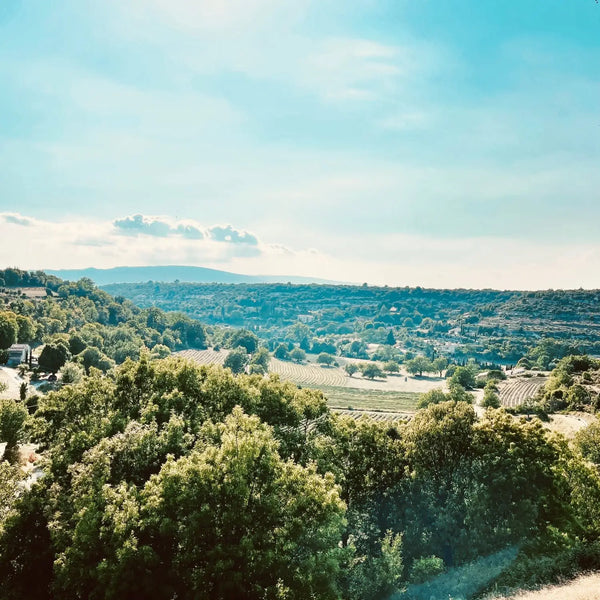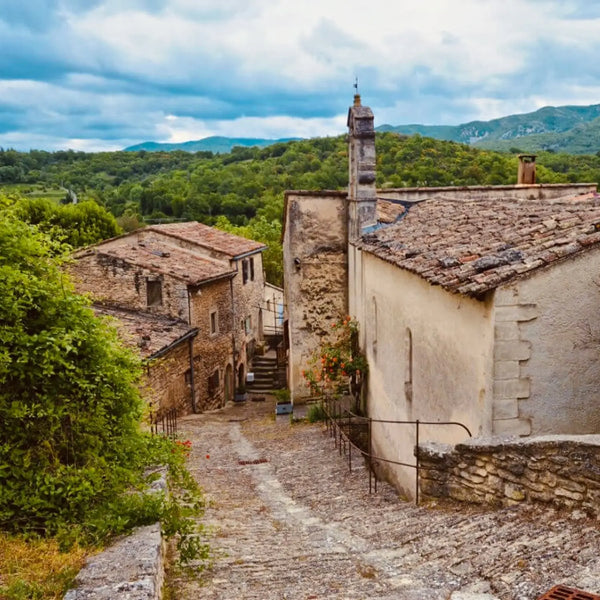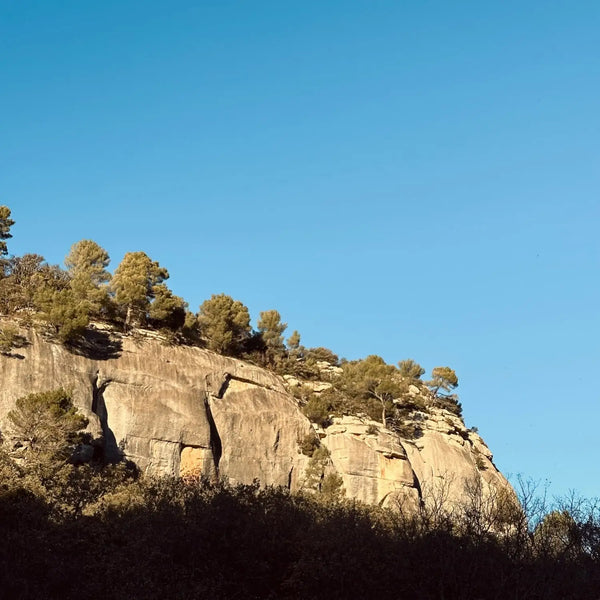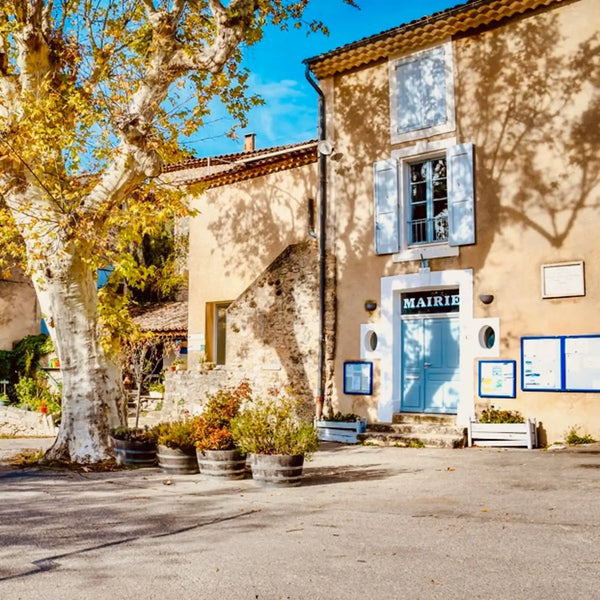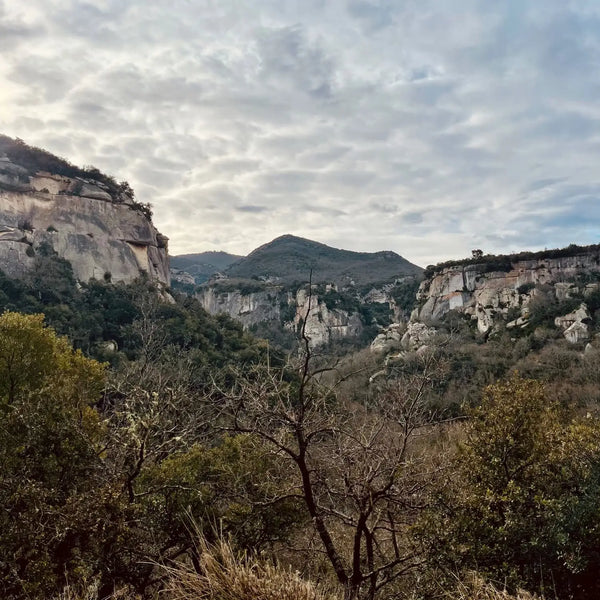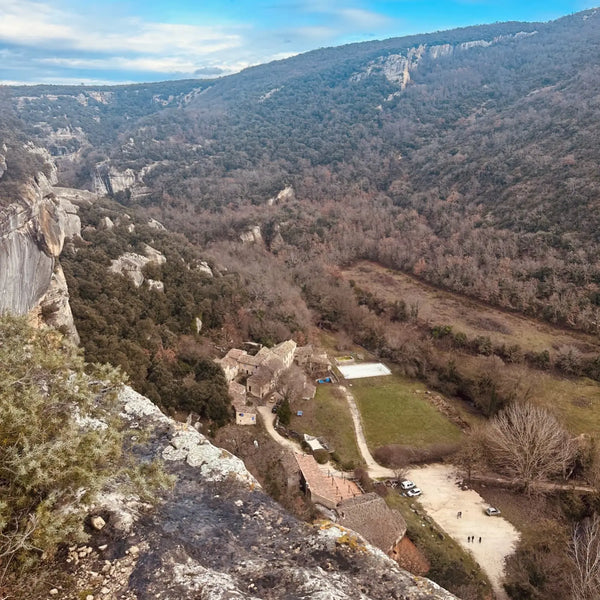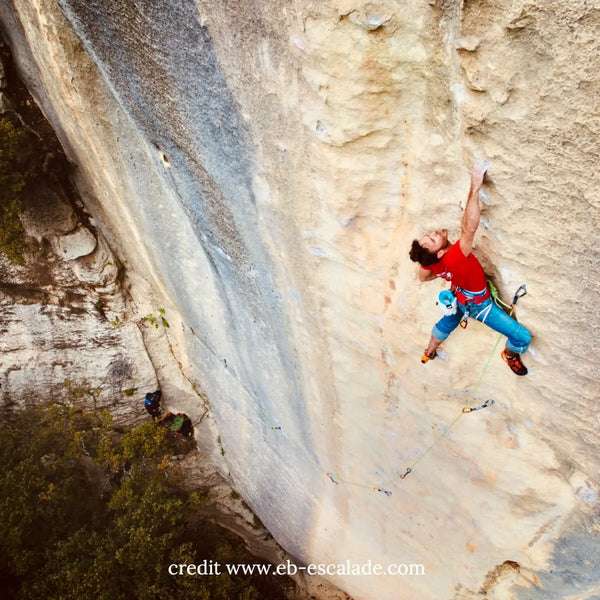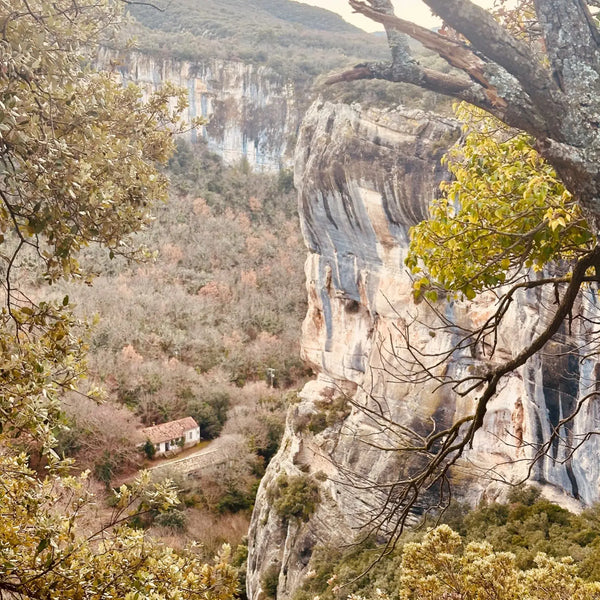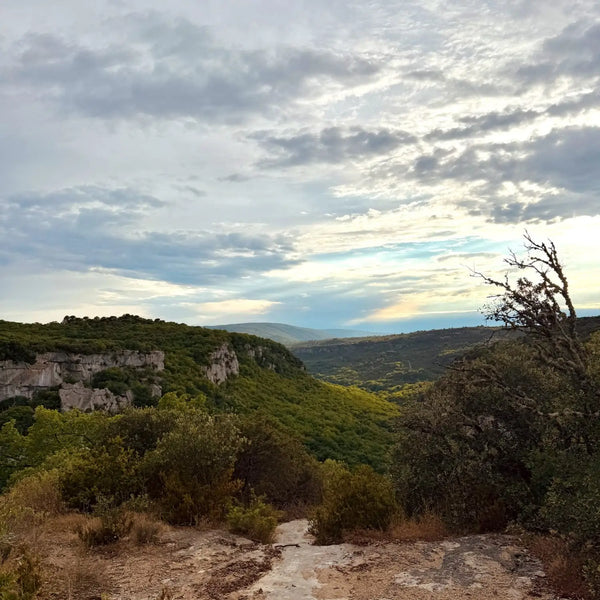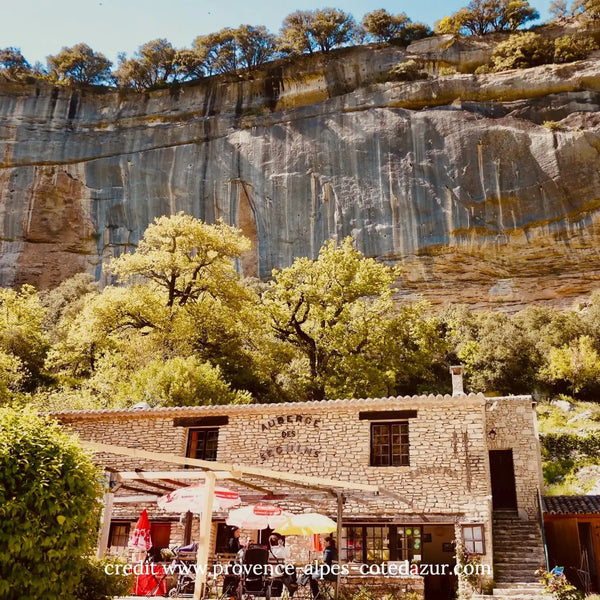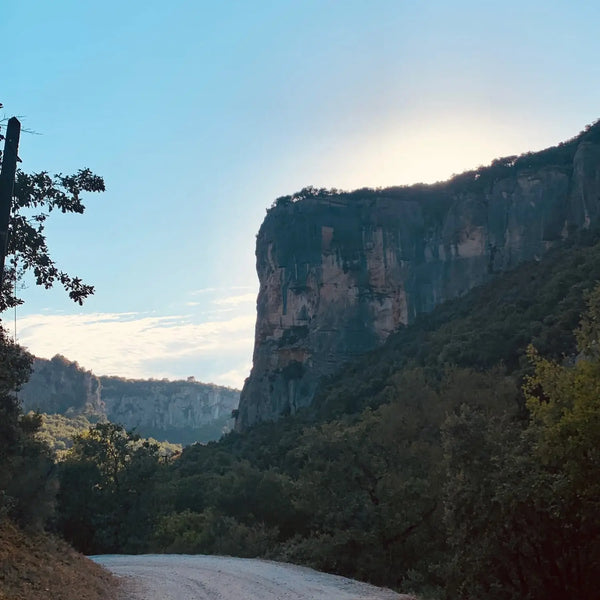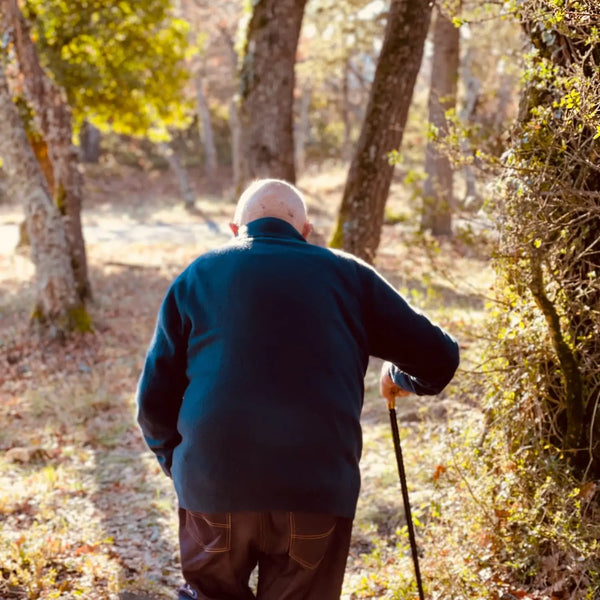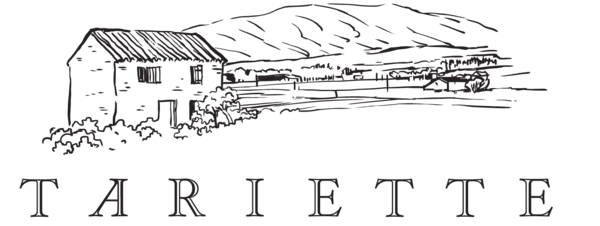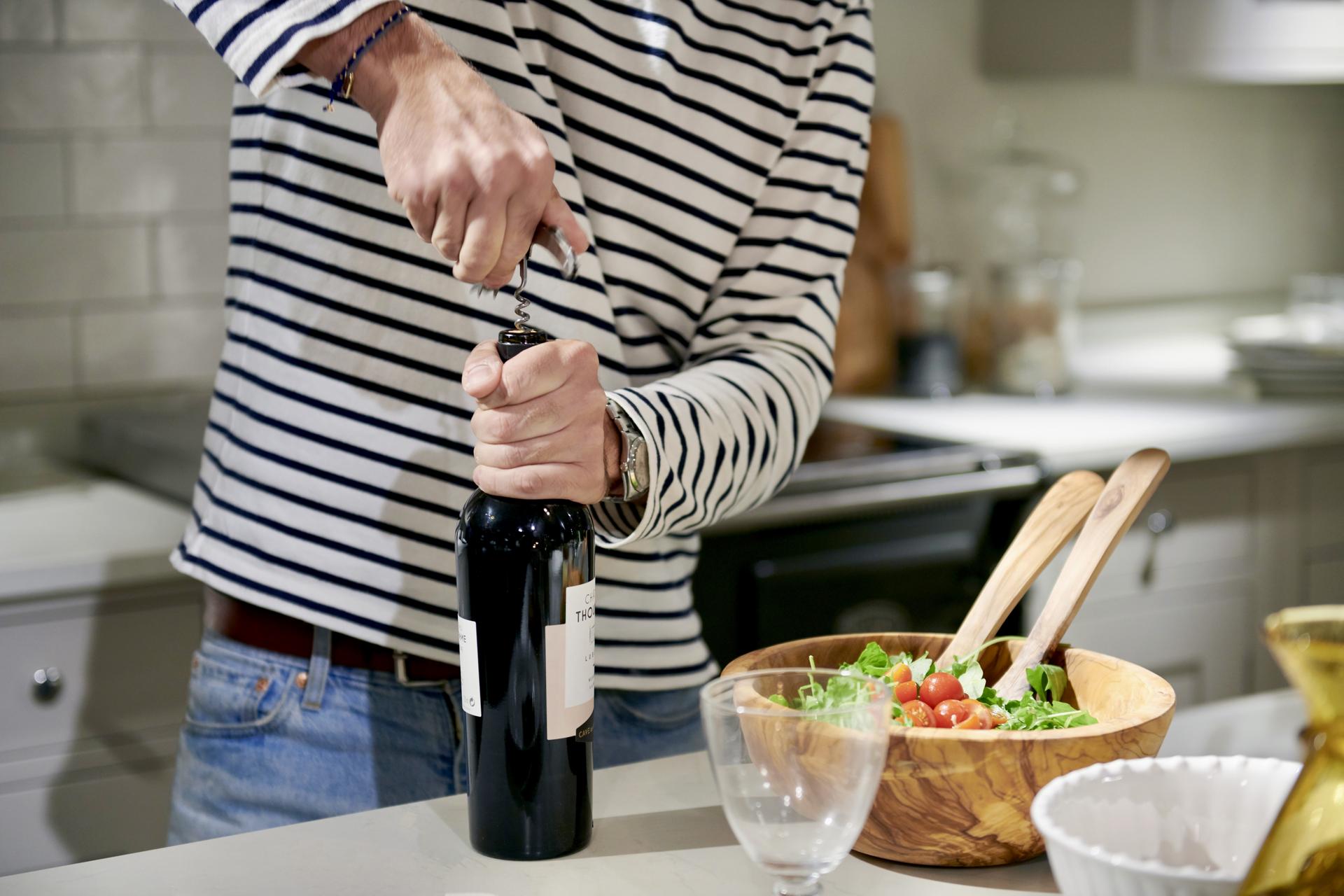
Buoux and the Aiguebrun oasis
Growing up in Provence often felt like being a character in a Pagnol story, thanks especially to my grandad Bob, whose love of nature shaped my childhood. I was at my grandparents most days, even after school, and would spend most holidays in that peaceful house with its Provençal garden, its vegetable patch, our dog, my cherished mountain bike, and my grandad’s little workshop. Every Wednesday (no school in France), while most of my friends played football, I would walk with my grandad, my best friend, along the Luberon trails between Saignon, Auribeau and Sivergues. He taught me the names of mushrooms, birds and herbs, and I came to know nearly every path in the area. Each walk was a quiet lesson in patience and wonder. And when the sun became too strong, we would escape to our secret cool spot, the Aiguebrun river, where the trees and canyon offered shade and the gentle water brought relief.
To reach our hidden gem, we would drive from Saignon through a winding road that seemed to dip and rise with the hills. As we neared the valley, we passed through Buoux, a small village clinging to a rocky hillside, high above the Aiguebrun below.
Buoux felt like a secret. It was deeply rural and beautifully still, a world apart from the more polished villages nearby. The stone houses stood quietly among wild rosemary and oleander trees, with lavender fields stretching in every direction. The mairie looked like a doll’s house. The old phone booth still stood, unused but untouched. A faded Michelin sign greeted us at the entrance, like a whisper from another time. The village felt suspended in a gentle silence, weathered by years. Perched at the top of the village is the Château de Buoux. Once a fortified home, later softened during the Renaissance, it now belongs to the Parc du Luberon and is used for retreats and educational programmes. A little further on, among tall cypress trees, stands the Romanesque Église Sainte Marie.
From there, the road dropped steeply into the valley. Bob would drive the Citroën slowly, while our dog slid from one side to the other in the back of the car, struggling to stay upright on the turns. I remember pressing my face to the window, staring at the shapes in the stone, waiting for the first glimpse of the river. At the bottom, by a narrow bridge, stood a small abandoned building. It had once been a summer camp, long closed when I first saw it. Just next to it, a gravel clearing where we would park the car. That was the start of our hidden walk, a place that felt like ours alone.
The cliffs around us rose like walls, soft and immense. They seemed even taller back then, though I later learned they stood eighty metres high. Formed from molasse stone, they had drawn climbers from around the world since the early eighties, though we rarely saw anyone there. From the car park, we would follow the river upstream. The path was wild and playful, sometimes narrow, winding between rocks and roots, ducking under branches. Bob led the way with quiet confidence. I followed, always with the same thrill. We were heading to the waterfalls.
Halfway to the Auberge des Seguins, the river widened slightly and the sound of falling water echoed through the trees. That was our spot. We always stopped there. I would jump in, even when the water felt icy. In summer, it was the best place to be. The pools were clear and cold, and I often brought our dog along. He loved it just as much as I did.
Back then, swimming was allowed. Today, it is not, to protect the native trout and crayfish that live in these waters. But those memories of diving in and then drying off in the sun are etched into my summers.
It was here, as a teenager, that I truly fell in love with fishing. I would come in early spring with my rod, chasing wild trout. But this river never made it easy. Narrow banks, overhanging branches and clever fish meant every catch was a quiet victory. In truth, I have probably caught fewer than twenty trout in the last twenty years. One trout a year, if that. Later, I would invite my first girlfriend for a walk, or friends for a picnic, at the same spot by the falls. One year, I brought a friend from Paris who had never held a rod before. We stayed overnight at the Auberge so we could be first on the river at sunrise for the opening of trout season in March. I must have been about twenty. To our delight, we both caught a trout that morning. We brought them back with pride, and the Auberge kindly cooked them for us. Simple, fresh and deeply satisfying, the kind of moment that stays with you forever.
And now? I still return. I bring my own dog, and we walk the same trail. Sometimes we picnic by the old spot. Even now, decades later, I feel that same thrill pulling into the car park. The cliffs, the trees, the scent in the air. Everything feels familiar, like nothing has changed.
Further down the road, the landscape shifts. You leave behind the raw beauty of the Aiguebrun valley and before long you arrive in Lourmarin, a postcard perfect village of galleries, fountains and polished shopfronts. It is charming, elegant, full of light and life. But it feels miles away in every sense from the wild silence of Buoux.
I love them both in their own way. But my heart will always belong to the shaded trail by the river, the quiet bend in the path where Bob once walked ahead, and the water ran cold and clear.
Lavender and hills near Buoux
